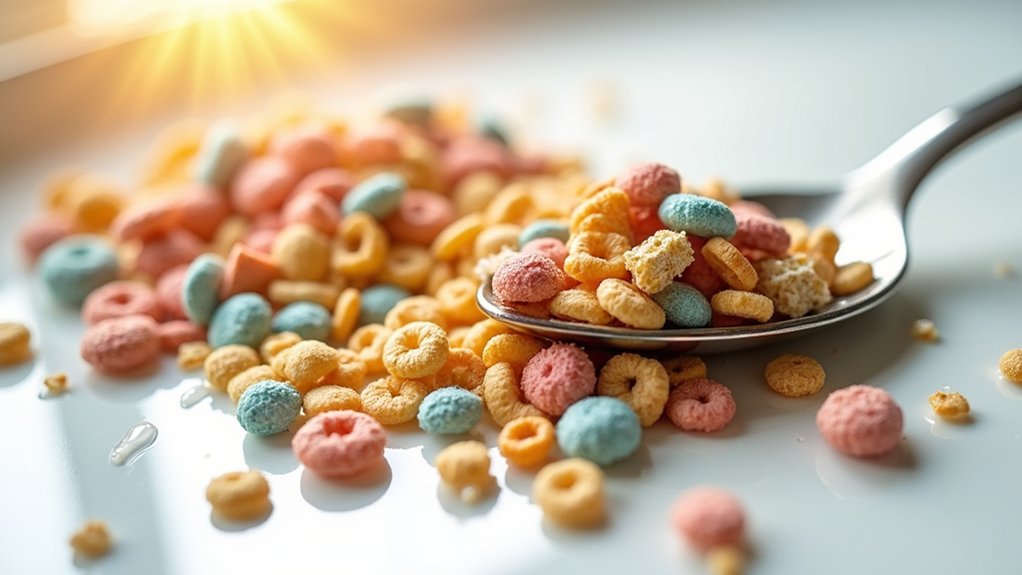To create an appealing blog layout, begin by using ample white space to improve readability and establish a polished appearance. Make your header engaging with high-quality images and attractive fonts that embody your blog's personality. Arrange your content with cards or thumbnails showcasing intriguing titles and clear 'Read More' buttons. Guarantee your navigation is user-friendly with easy-to-follow menus and sticky navigation bars. Optimize your layout for mobile compatibility to expand your reach. Lastly, integrate social sharing buttons prominently to increase engagement and visibility. Explore how these elements collaborate to craft a stunning blog layout.
Key Takeaways
- Utilize ample white space to enhance readability and create a clean, modern look.
- Design a captivating header with high-quality imagery and fonts that reflect the blog's personality.
- Organize content using cards or thumbnails with compelling titles and images.
- Implement clear, user-friendly navigation menus and sticky navigation bars for ease of access.
- Ensure mobile compatibility with responsive design and legible fonts for an optimal user experience.
Utilize White Space
Incorporating ample white space in your blog layout greatly enhances readability and user experience. By embracing minimalist aesthetics, you can craft a clean and modern look that feels both sophisticated and welcoming. Whitespace utilization isn't just about leaving blank areas; it's a strategic design choice rooted in the psychology of spacing.
It helps to reduce cognitive overload, allowing your readers to focus more on the content without feeling overwhelmed.
The effective use of white space creates a visual hierarchy, guiding your visitors' eyes naturally from one section to the next. This makes navigation intuitive and keeps readers engaged longer.
Think of white space as the silent organizer of your layout, subtly directing attention and emphasizing key elements without clutter.
Create a Captivating Header
Crafting an engaging header transforms your blog's first impression, instantly drawing readers in with a blend of high-quality imagery, an appealing logo, and a succinct blog description. Your header is the visual handshake of your blog, setting the tone and inviting visitors to explore further.
To make it captivating, start with color psychology; choose colors that resonate with your blog's theme and evoke the desired emotional response. For example, blues can convey trust and professionalism, while vibrant reds can instill excitement and passion.
Next, focus on font selection. Opt for a font that reflects your blog's personality—whether it's playful, elegant, or minimalist. The font should be readable and harmonize with the overall design, enhancing rather than overwhelming the header. Your blog name and tagline should be prominently displayed, creating a cohesive brand identity that sticks in your readers' minds.
Incorporate a high-quality image that complements your blog's niche. This visual element not only grabs attention but also provides context, making your header both functional and aesthetically pleasing.
Organize With Cards or Thumbnails
Enhance your blog's visual appeal and usability by organizing your posts with cards or thumbnails. This method not only makes your content more engaging but also helps visitors navigate through your blog effortlessly. Each card or thumbnail should feature an alluring image, a compelling title, and an enticing excerpt. These elements work together to attract readers and encourage them to explore more.
To make your cards or thumbnails even more effective, pay attention to your color palettes and font choices. A harmonious color palette can make your blog look cohesive and visually appealing, while carefully selected fonts can enhance readability and overall aesthetic. Use contrasting colors for titles and 'Read More' buttons to make them stand out, guiding users' eyes exactly where you want them to go.
Incorporating 'Read More' buttons on each card or thumbnail is a smart strategy to drive deeper engagement. This not only keeps your layout clean and concise but also provides a clear pathway for readers to delve into full articles. By using cards or thumbnails, you provide a structured and organized way to showcase your blog posts, making it easier for your audience to find and enjoy your content.
Clear and intuitive navigation menus are essential for a user-friendly blog experience, allowing your readers to find content effortlessly. Start by organizing your blog into easily identifiable categories. This way, visitors can quickly locate the content they're interested in without feeling lost.
Dropdown menus are particularly effective for complex content structures, streamlining access to various sections without overwhelming the user. Incorporate a sticky navigation bar that remains visible as users scroll down the page. This feature guarantees that navigation options are always accessible, enhancing the user experience.
When designing these menus, use descriptive labels for navigation links. Clear labels guide users effectively, making their journey through your blog seamless and enjoyable. Pay attention to your color schemes and font choices.
Consistent and aesthetically pleasing color schemes not only attract users but also make different sections of your navigation bar easy to distinguish. Similarly, choose fonts that are readable and match your blog's overall aesthetic.
Clean, modern fonts often work best, ensuring that your navigation remains both functional and visually appealing.
Ensure Mobile Compatibility
Securing your blog's mobile compatibility is essential for reaching and retaining today's on-the-go audience. Over half of internet traffic comes from mobile devices, so a responsive design isn't just a nice-to-have—it's a must.
When your blog adapts seamlessly to different screen sizes and resolutions, you provide a superior user experience that keeps visitors engaged.
Start by choosing a color scheme that looks great on smaller screens. Bold, contrasting colors can make your content pop, while softer tones can create a soothing reading experience. Guarantee that your color palette maintains readability and visual appeal regardless of the device.
Next, pay close attention to font selection. Mobile screens require fonts that are legible at smaller sizes. Sans-serif fonts often work best because they're clean and easy to read. Make sure your line spacing and font size are optimized for mobile viewing to avoid any strain on the reader's eyes.
Google prioritizes mobile-friendly websites in search rankings, so optimizing for mobile also boosts your SEO. By focusing on mobile compatibility, you not only reach a broader audience but also ensure they stay longer and interact more with your content.
Optimize Images for Speed
Optimizing your blog's images dramatically boosts page load speed, creating a smoother and more engaging user experience. When images load quickly, visitors are more likely to stay on your site, lowering bounce rates and keeping them engaged with your content.
To start, compressing images without losing quality is key. Use tools like Adobe Photoshop or online alternatives to reduce file sizes efficiently. Smaller images load faster, improving your blog's speed and, consequently, its SEO ranking. Additionally, consider utilizing modern image formats like WebP. These formats offer superior compression, further enhancing load times and user experience.
Another effective strategy is implementing lazy loading. This technique defers the loading of offscreen images until the user scrolls near them, significantly improving initial page load speed. Not only does this enhance UX by making your blog feel more responsive, but it also positively impacts your SEO by reducing the time it takes for your page to become interactive.
Add Social Sharing Buttons
To maximize the impact of social sharing buttons, place them in highly visible areas like the top or bottom of your posts.
Choose icon designs and sizes that complement your blog's aesthetic while ensuring they're easily recognizable.
Integrate buttons for popular platforms like Facebook, Twitter, and Pinterest to cater to your audience's sharing preferences.
Placement for Maximum Visibility
Prominently placing social sharing buttons on your blog posts greatly enhances visibility and user engagement. Effective button placement can greatly boost the number of shares your content receives, driving more traffic to your site.
To maximize their impact, position these buttons either at the beginning or end of your blog posts. This strategic placement ensures they're easily accessible when readers are most likely to share—either when they're intrigued by the introduction or moved by the conclusion.
To capture attention, use eye-catching icons and vibrant colors. Make sure the social sharing buttons stand out without clashing with your blog's overall aesthetic. A well-thought-out button placement that aligns with your design can seamlessly integrate these elements into your content, enhancing the user experience.
Additionally, prioritize mobile-friendliness. With a significant portion of readers accessing blogs via mobile devices, ensuring your social sharing buttons are easily tappable on smaller screens is important. Test their functionality across various devices to guarantee a smooth user experience.
Icon Design and Size
When designing social sharing buttons, start by choosing recognizable icons like Facebook, Twitter, and Instagram to make sure they catch your readers' attention. Selecting these familiar symbols is vital for encouraging engagement and making your blog more shareable.
Next, focus on the icon size. Keeping them around 32×32 pixels ensures they're noticeable without overwhelming your layout. This balance is essential for maintaining a clean, professional appearance. Integrate these buttons into your blog's color scheme to create a cohesive visual experience. Aligning them with your blog's palette not only enhances aesthetic appeal but also promotes brand consistency.
Don't forget about font selection when labeling or adding text nearby. Using a clean, readable font complements the icons and reinforces clarity. Position your social sharing buttons strategically within your posts, such as at the beginning or end, so they're easily accessible to readers.
Enhance engagement by adding subtle hover effects or animations to your buttons. These interactive elements can make the sharing experience more enjoyable.
Integration With Popular Platforms
By integrating social sharing buttons with popular platforms like Facebook, Twitter, and LinkedIn, you can effortlessly enhance your blog's visibility and reader engagement. These buttons make it simple for visitors to share your content across their social networks, amplifying your reach through social media engagement. When readers find your posts valuable, they're more likely to share them, leading to increased traffic and brand awareness.
Including social sharing buttons isn't just about convenience; it's a strategic move for cross platform promotion. Studies have shown that blogs with these buttons generate notably more shares and interactions compared to those without. This means your content can reach a wider audience, tapping into the networks of your current readers.
To maximize the effectiveness of these buttons, place them in prominent locations on your blog, such as at the beginning or end of your posts. Ensure they're visually appealing and aligned with your blog's design to maintain a cohesive aesthetic.
Frequently Asked Questions
How Do I Beautify My Blog?
To beautify your blog, choose readable typography and cohesive color schemes. Use high-quality images, videos, and a clean layout. Optimize for all devices, and experiment with headers, menus, and white space for a polished look.
What Is a Good Structure for a Blog Post?
Start with an engaging introduction paragraph, use subheadings for organization, and include visuals. Utilize bullet points for clarity. Wrap up with a concise conclusion section. Add internal and external links to enhance SEO and user experience.
How Should a Great Blog Be Designed and Formatted?
Prioritize readability by choosing clear, consistent typography. Use color schemes that complement your content and enhance visual appeal. Effectively utilize white space, engaging visuals, and a responsive design. Add social sharing buttons to boost engagement.
How to Make Your Blog Aesthetic?
To make your blog aesthetic, choose consistent color schemes and thoughtful font choices. Incorporate high-quality images, utilize white space effectively, and guarantee a responsive layout for a cohesive and visually pleasing design on all devices.
Conclusion
By incorporating white space, crafting an engaging header, organizing content with cards or thumbnails, designing user-friendly navigation, ensuring mobile compatibility, optimizing images for speed, and adding social sharing buttons, you'll create an attractive blog layout that keeps readers engaged.
Remember, a well-designed blog isn't just about aesthetics; it's about enhancing the user experience. So, go ahead and apply these tips to make your blog visually appealing and highly functional.
Happy designing!




